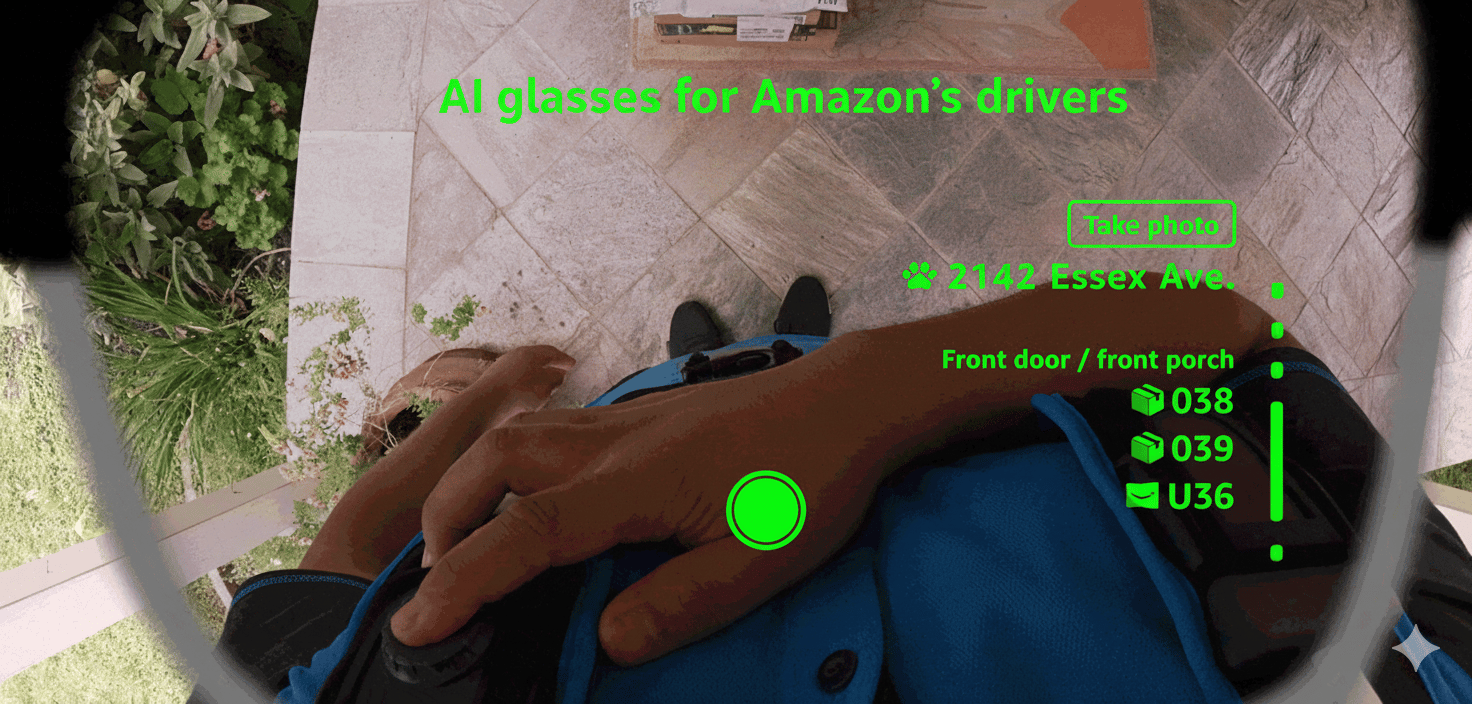- H-FARM AI's Newsletter
- Posts
- Amazon deploys smart glasses for delivery drivers
Amazon deploys smart glasses for delivery drivers
PLUS: AI pioneers signed petition to stop superintelligence development & Anthropic catches up with OpenAI revenue growth. Meta cuts 600 AI division jobs, Google Willow achieves quantum advantage.

In today’s agenda: |
|
MAIN AI UPDATES / 23rd October 2025
👓 Amazon deploys smart glasses for delivery drivers 👓
AI-powered wearables enhance delivery safety and efficiency.
Amazon introduced smart glasses for its delivery fleet that project navigation instructions and package information directly into drivers' vision field. The glasses display turn-by-turn walking directions, package scanning data, and delivery confirmations using AI-powered sensing capabilities and computer vision technology. A vest-mounted controller provides operational controls with swappable batteries for all-day use and includes a dedicated emergency button. Future versions will detect wrong-address deliveries, pets, and potential hazards. Hundreds of delivery drivers tested early versions and provided feedback that shaped the final design.
🛡️ AI pioneers signed petition to stop superintelligence development 🛡️
Unprecedented coalition demands government intervention on AI safety.
Over 25,000 people including AI pioneers Yoshua Bengio and Geoffrey Hinton, Apple co-founder Steve Wozniak, and Virgin's Richard Branson signed a Future of Life Institute petition demanding governments prohibit superintelligence development until proven controllable and publicly approved. The petition raises concerns about human economic obsolescence and disempowerment, losses of freedom, civil liberties, dignity, and control, national security risks, and potential human extinction. The statement aims to create common knowledge of the growing number of experts and public figures who oppose a rush to superintelligence.
📈 Anthropic catches up with OpenAI revenue growth 📈
Claude maker grows 600% in single year, closing gap with rival.
Anthropic's run-rate revenue reached $7 billion, growing from $1 billion to $7 billion in 2025 alone—a 600% increase. OpenAI's run-rate reached $13 billion in October, growing 136% from $5.5 billion in December 2024. Anthropic makes most of its revenue from API sales while OpenAI makes the bulk from consumer subscriptions. Anthropic's API-focused approach requires fewer free users and enables easier upsells. The company's $9 billion target for this year remains achievable, positioning Anthropic as a serious competitor despite entering the market later.
INTERESTING TO KNOW
💼 Meta cuts 600 AI division jobs 💼
Meta eliminated approximately 600 positions across its AI division, including workers from AI infrastructure units and the Fundamental Artificial Intelligence Research (FAIR) unit. The cuts did not impact TBD Labs employees, which includes many of the top-tier AI hires brought in this summer. Employees received 16 weeks of severance plus two weeks for every completed year of service. Chief AI Officer Alexandr Wang justified the reductions as creating smaller teams requiring fewer approvals, cementing his role in steering Meta's AI strategy.
⚛️ Google Willow achieves quantum advantage ⚛️
Google's Willow quantum chip demonstrated the first-ever verifiable quantum advantage by running the Quantum Echoes algorithm 13,000 times faster than the world's fastest supercomputers. The breakthrough enables precise measurement of molecular structure using Nuclear Magnetic Resonance (NMR) data, with applications in drug discovery, materials science, and nuclear fusion research. In a proof-of-principle experiment with UC Berkeley, Willow analyzed molecules with 15 and 28 atoms, matching traditional NMR results while revealing previously unavailable information.

📩 Have questions or feedback? Just reply to this email , we’d love to hear from you!
🔗 Stay connected:
